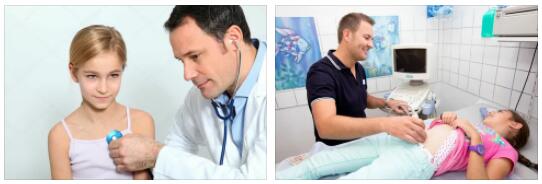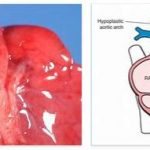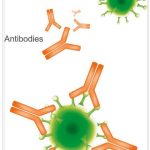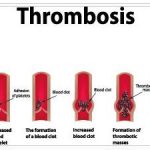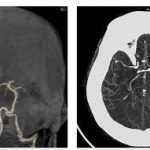Neu Laxova syndrome is a malformation syndrome that has been associated with incest. The affected children have multiple malformations, most of which are fatal. There are hardly any treatment options because of the severity and multitude of malformations.
What is Neu Laxova Syndrome?
A series of symptom complexes that appear as multiple malformations from birth are referred to as malformation syndromes. Neu-Laxova syndrome is one such symptom complex involving various birth defects. The series of physical deformities in this syndrome results in stunted growth and is usually associated with a fatal outcome. See phonecations for All You Need to Know About Melanoma (or Black Skin Cancer).
At the end of the 20th century, a team led by the geneticist RL Neu described the symptom complex for the first time. Shortly thereafter, the malformation syndrome was described by the Czech-American geneticist R. Laxová in three other cases. Other cases were described by a team of geneticists led by Viera Povysilová. The term Neu-Laxoa syndrome was first used by G. Lajzuk.
Synonymous terms are Neu syndrome and Neu Povysilová syndrome. The malformation complex is extremely rare and has only been described in around 50 cases to date. For this reason, the state of research on the disease has not yet come to a conclusion.
Causes
Because of the few cases recorded so far, the causes of Neu-Laxova syndrome have not been finally clarified. A hereditary basis is obvious. However, the karyotype in the cases described so far was unremarkable and showed no special features or deviations from the norm. An autosomal recessive inheritance is suspected on the basis of previous research results. The malformation complex seems to be favored by incest.
In most of the cases studied so far, the parents of those affected were more or less closely related. That incestuous reproduction can be associated with birth defects has long been a proven fact. The ethnic background of the cases described so far is extremely variable. Ethnic factors therefore do not seem to play a causal role in the syndrome. The same applies to gender. The gene responsible for the symptom complex has not yet been identified.
Symptoms, Ailments & Signs
Patients with Neu Laxóva syndrome suffer from multiple malformations and developmental disorders. In addition to intrauterine growth retardation, severe microcephaly usually occurs. A receding forehead is also characteristic of the malformation syndrome, as is severe ichthyosis and multiple facial dysmorphism.
The central nervous system of those affected also usually shows severe defects. In addition to type III lissencephaly, these primarily include hypoplasia of the cerebellum or the brainstem. Enlarged ventricles are common, as are intracerebral calcifications, Dandy-Walker anomaly, and agenesis of the corpus callosum. This failure of the cerebral beam causes behavioral problems, sensory disturbances, and sometimes mental retardation.
In addition to severe proptosis including ectropion of the eyelids, facial symptoms often include hypertelorism or microgenia. Flat noses and malformed ears are just as common. Patients have thick lips and a round mouth that is usually open. Defects in the radial ray, for example, can be considered as malformations of the limbs. The external genitals often appear abnormal. Sometimes there is also arthrogryposis multiplex.
Diagnosis & course of disease
The diagnosis of Neu-Laxova syndrome and its clinical malformations is usually made by the doctor by visual diagnosis immediately after birth. Prenatal diagnosis is also possible. In addition to IUGR, hydramnios and hypoechoic skeletal structures, the ultrasound in the 20th week of pregnancy already shows microcephaly, prominent eyes and reduced mobility.
In most cases, sonography also reveals massive swellings on the scalp. In addition to the knees, elbow joints and hands, the feet also appear swollen. This often gives the impression that the child is missing its fingers. In a histopathology, skin changes after birth such as massive accumulations of fat with hypertrophy or edema, a lack of cortical bone or changes in the nervous tissue can support the diagnosis.
In general, patients with Neu-Laxova syndrome have an extremely poor prognosis. Those affected are either born dead or die shortly after birth.
Complications
Due to the Neu-Laxova syndrome, the affected children suffer from many and, above all, severe malformations. As a rule, these malformations can no longer be treated with the help of a surgical procedure, so that direct treatment of this disease is not possible. Growth delays also occur due to Neu Laxova syndrome, so the children depend on the help of other people.
For this reason, severe complications and limitations also occur in adulthood. Furthermore, the Neu-Laxova syndrome is accompanied by severe mental retardation and the affected children show severe behavioral problems. Various malformations also appear directly on the patient’s face, which can lead to speech disorders or difficulty swallowing.
In many cases, Neu-Laxova syndrome also results in outright stillbirth. If the affected person survives the birth, they usually die a few days after the birth. Since treatment cannot be carried out, there are no particular complications. However, the parents or relatives are often dependent on psychological care if the child dies. This is usually done with the help of psychotherapy.
When should you go to the doctor?
If there is knowledge of a possible incest, it is always necessary to consult a doctor. In these cases, the offspring shows various malformations that must be examined and clarified. If children are born with physical deformities, these are noticed by the obstetricians in the first examinations immediately after the birth in the hospital or birth center and are examined further. If there is a need for action from a medical point of view, immediate adequate care of the newborn is initiated.
If the parents or relatives only notice abnormalities in the child’s body structure or delays in general development as the child continues to develop and grow, a doctor should be consulted. Comparisons between peers can provide information on whether there are irregularities or whether it is a natural progression. If there are observable learning delays, changes in body structure or peculiarities in behavior, the indications should be discussed with a doctor.
A reduction in intelligence, abnormalities within social interactions or disturbances in sensory perception must be examined and treated by a doctor. In the case of optical anomalies such as thick lips or changes in the external genitalia, a doctor’s visit is necessary. If discrepancies in the movement sequences are detected or if there is insecurity when walking or incorrect posture of the body, it is advisable to consult a doctor.
Treatment & Therapy
There is no causal therapy for Neu-Laxova syndrome. The symptom complex can only be treated symptomatically. Since most patients have been stillborn and only so few cases of the syndrome have been recorded, there are hardly any reports or literature on possible treatment options. While toe or finger deformities may be surgically correctable, central nervous system deformities are not.
In theory, congenital heart defects can also be treated. Due to the large number of deformities, those affected will probably not survive any treatments and corrections. When patients with Neu-Laxova syndrome are born alive, the main goal of treatment is to improve the quality of life in what is believed to be a severely limited life.
The parents of the affected children must receive professional support within the framework of psychotherapy. Prenatal diagnostics enable the parents to receive therapeutic care long before birth. In this way, the therapist can prepare the expectant parents for the birth and death of the child.
The therapeutic care of the parents should also continue after the death of the child. In addition, the parents must be informed in an information session about the 25 percent risk of recurrence for other children.
Outlook & Forecast
Patients with Neu Laxova syndrome suffer from multiple malformations that result in an unfavorable prognosis. In most cases, the various birth defects are so severe that the patient dies prematurely. In addition to numerous visual abnormalities, there are disturbances in behavior and mental retardation.
Restricted movement, growth disorders and swallowing difficulties are among the usual symptoms of the patient. A stillbirth or a lifetime of a few days is documented for a large number of those affected. If the patients survive the first few weeks or months, the further course of development is also difficult and must be assessed individually. Surgical interventions are necessary to ensure survival or to improve the existing quality of life.
Without medical care, acute situations develop that often lead to death. Due to the overall circumstances, psychotherapeutic support is necessary. The patient and his relatives need help because they are in a difficult life situation.
Medical advances make it possible to successfully treat some of the possible ailments. For example, heart defects can be treated immediately after birth while the organism is otherwise functionally stable. Surgical interventions for the correction of malformations of the skeletal system are also possible. Despite the reduced life expectancy, this enables improved well-being for the patient.
Prevention
The exact circumstances and causes of Neu-Laxova syndrome have not yet been finally clarified. For this reason, there are hardly any preventive measures. Because of its association with incestuous relationships, abstinence from any incest can be viewed as a preventive measure. Thanks to the possibility of prenatal early diagnosis, parents can also decide against the child.
Aftercare
In most cases, those affected with Neu-Laxova syndrome have only a few and only limited follow-up measures available. Direct treatment is not possible because this disease is a hereditary disease that cannot be completely cured. As a rule, the desire to have children should not be pursued with Neu-Laxova syndrome, since the disease can also be inherited by the descendants.
A doctor should be consulted at the very first signs and symptoms of the disease to prevent further complications or worsening of the symptoms. The treatment itself depends on the severity of the symptoms, so that a general prediction is usually not possible.
Those affected are dependent on physiotherapy measures, although many of the exercises can also be carried out at home. In the case of a stillbirth, the parents are dependent on intensive psychological therapy, whereby the help of their own family and relatives is also useful. Likewise, another desire to have children with the same partner should not be pursued again in order to prevent the recurrence of Neu Laxova syndrome.
You can do that yourself
Neu-Laxova syndrome is always fatal. The self-help measures for the parents can consist of discussions with other affected people and general measures such as sport and rest. Participation in self-help groups makes it easier to understand and accept the disease. This allows the parents to accept the loss of the child in the long term.
In addition, trauma therapy is often necessary. The parents can also take part in special couples therapy, in which the traumatic phase of life can be worked through. After a difficult event, the parents often do not succeed in overcoming it without outside help. Visiting a specialist center for malformation syndromes or talking to a specialist are important components of effective self-help. The affected child usually dies in the womb. If a live birth occurs, curative measures can be initiated. Parents should spend a lot of time with the child in the remaining days and weeks.
Neu-Laxova syndrome is a congenital disease, which is why genetic education is recommended for parents who want to have children again after the loss of a child, so that the risk of a new case of the disease can be estimated.
